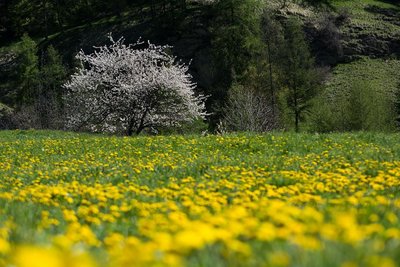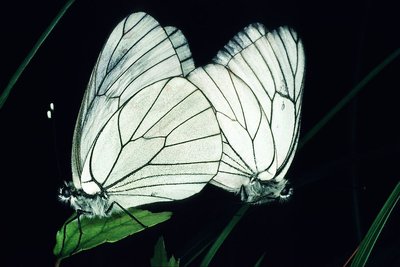
The Onde circuit (no. 5)
Description
Setting out from the Gérendoine bridge on the left-hand bank of the Onde, follow the track leading upstream.
- Turn left to cross the Pont de Fontaines, and then right to take another track running along the Onde, but this time on the right-hand bank
- Go right at the intersection at the Pont des Places at the entrance to the campsite, crossing the Onde and turning right again to join a paved road on the left-hand bank of the Onde
- 250 metres after the bridge, turn right to leave the paved road and join a stony path
- Turn right to cross the Pont de Fontaines again and then left towards the Cascade de la Pissette, on the right-hand bank of the Onde heading downstream
- Bear left crossing the (unnamed) bridge to join the original track, heading towards Vallouise until you come to the Gérendoine bridge
- Cross the bridge and then turn left onto a track running along the right-hand bank of the Onde
- Leave the track and the Onde, turning right onto a new path. 200 metres further on, after crossing the local road, being very careful of the traffic
- Before the house, turn right uphill to start the small tour
- After the descent, take the track on the left to return to the path previously taken and your starting point
- Departure : Pont de Gérendoine (left-hand bank of the Onde), Vallouise
- Arrival : Pont de Gérendoine (left-hand bank of the Onde), Vallouise
- Towns crossed : Vallouise-Pelvoux
Altimetric profile
Recommandations
Rescue services contact details: Secours Montagne(Mountain Rescue): +33 (0)4 92 22 22 22 or 112
Take your litter home
Do not take shortcuts across pastureland In mountain pastures, protection dogs are there to protect the herds from predators (wolves, etc.).
In mountain pastures, protection dogs are there to protect the herds from predators (wolves, etc.).
When mountain biking, I adapt my behavior by going around the herd, pausing and getting off the bike so the dog can identify me.
Find out more about the actions to adopt with the article "Protection dogs: a context and actions to adopt".
Tell us about your meeting by answering this survey.
Information desks
Place de l'Eglise, 05340 Vallouise
Vallouise Park house
, 05290 Vallouise
Information, documentation, models, exhibitions, screenings, product sales and works of the Park. Guided tours for school, reservation required. The new Park House opened in Vallouise since June 1, and offers visitors an interactive permanent exhibition inviting to explore the area and its heritage. A temporary exhibition space will allow a renewed offer. Finally, the device is completed by an audiovisual room to organize screenings and conferences Free admission. All animations of the Park are free unless otherwise stated.
Transport
Public transport >> www.pacamobilite.fr
Consider car-sharing >> www.blablacar.fr
For more information, ask at the Tourist Information Office nearest to the trail starting point >> www.paysdesecrins.com
Access and parking
Parking :
8 points of interest

Petite verge d'or - Cédric Dentan - Parc national des Écrins  Flora
FloraThe great goldenrod
In damp spots on the edge of the track, swathes of tall plants grow. It forms great plumes of tiny yellow plants. The great goldenrod, still known as the tête d'or or "head of gold" is a plant native to North America and introduced into Europe in the eighteenth century as an ornamental. Since then, it has colonised a large are of Europe and in some places it even competes with the local flora.

Merisier en fleur - Mireille Coulon - Parc national des Écrins  Flora
FloraThe bird cherry
Here where the soil is sufficiently cool, a small tree with oval, pointed leaves grows on the side of the track. In May, when it starts to come into leaf, the bird cherry, a cousin of the familiar ordinary cherry tree, produces numerous clusters of highly scented white flowers. These later develop into in loose bunches of small dark cherries which are only just edible. It was called the "putiet" or stinking wood, not because of its scented flowers of course, but its bark.
Le gazé - Jean-Marie Gourreau - Parc national des Écrins  Fauna
FaunaThe black-veined white
What could be better than a great pile of manure, its nutrient-rich liquid seeping onto the road? This windfall attracts clouds of butterflies which settle in their dozens on the road, risking their lives. It is the ideal spot (well, sort of!) for admiring them because they are so preoccupied with sipping this nectar. One of them is easy to identify: the black-veined white with very distinctive black veining. This butterfly is very common, so it can be spotted very frequently, not only near piles of manure!

Epilobe en épis - Thierry Maillet - Parc national des Écrins  Flora
FloraThe rosebay willowherb
The rosebay willowherb is a tall, upright plant with elongated leaves. Its numerous purple-pink flowers are arranged in loose spikes at the top of the stem. It forms large clumps, which produce a beautiful display when in bloom. It is a pioneer plant and favours road embankments and disturbed ground. In late summer, its very numerous seeds, each with a little plume, float away en masse glowing in the advancing twilight…

Le morio - Bernard Nicollet - Parc national des Écrins  Fauna
FaunaThe morio
With wings edged with creamy white and sporting a string of little blue dots, a large butterfly takes flight from the path as the walker approaches. This is the morio. Its common French name is manteau royal, or royal cloak (although her cloak is not edged with ermine!) It lives near willow and beech trees because it loves the sap that flows from wounds in these trees. It is one of the few butterflies to hibernate as an adult.

Hélice des Alpes - Damien Combrisson - Parc national des Écrins  Fauna
FaunaThe Alpine copse snail
On the damp banks of the stream, hidden in the grass, is a snail with a beautiful golden brown shell speckled with brown, decorated with a dark spiral stripe. It has a black body. The alpine copse snail is relatively rare and, as its name suggests, it is found in the Alps. It is a sub-species of the ordinary copse snail, which is present across Europe.

Géranium des bois - Marc Corail - Parc national des Écrins  Flora
FloraWood cranesbill
The path is edged with large clumps of a plant with purple flowers, the wood cranesbill. The leaves are palmate and divided into 5 to 7 incised and indented lobes, This common plant grows in meadows and cool woods. The «geraniums» we see on balconies are in fact pelargoniums, distant cousins originally from South Africa and cultivated for ornamental purposes.

La mésange à longue queue - Robert Chevalier - Parc national des Écrins  Fauna
FaunaThe long-tailed tit
Some birds are causing a stir in a tree, constantly coming and going and uttering little calls. They are round and black and pinkish beige in colour with a long tails, hence their name, the long-tailed tit. They are resident birds and always live in small groups. They inhabit forests, undergrowth and even gardens. They weave a ball-shaped nest out of lichen, moss and dry grass.
Source

Report a problem or an error
If you have found an error on this page or if you have noticed any problems during your hike, please report them to us here:


